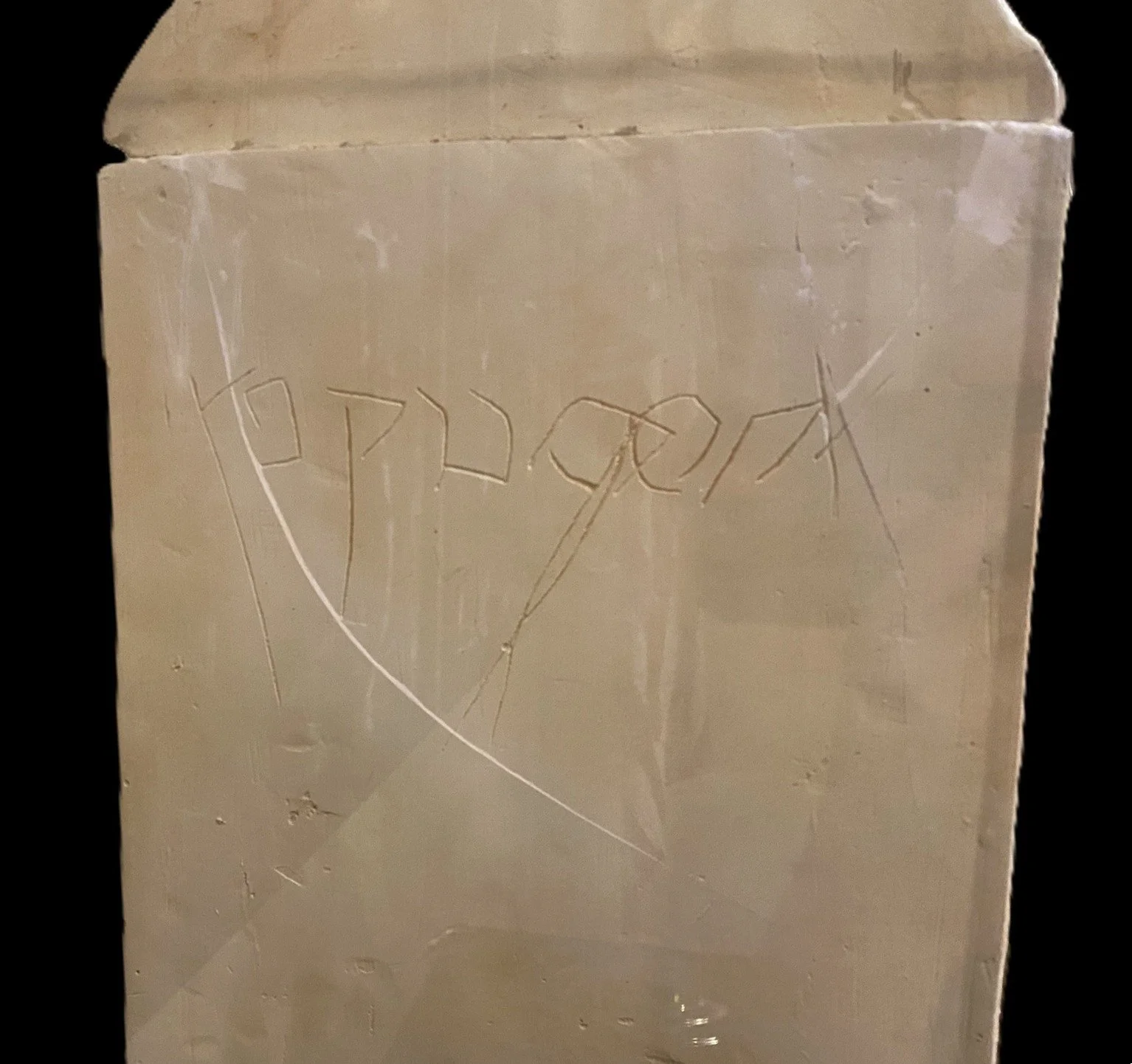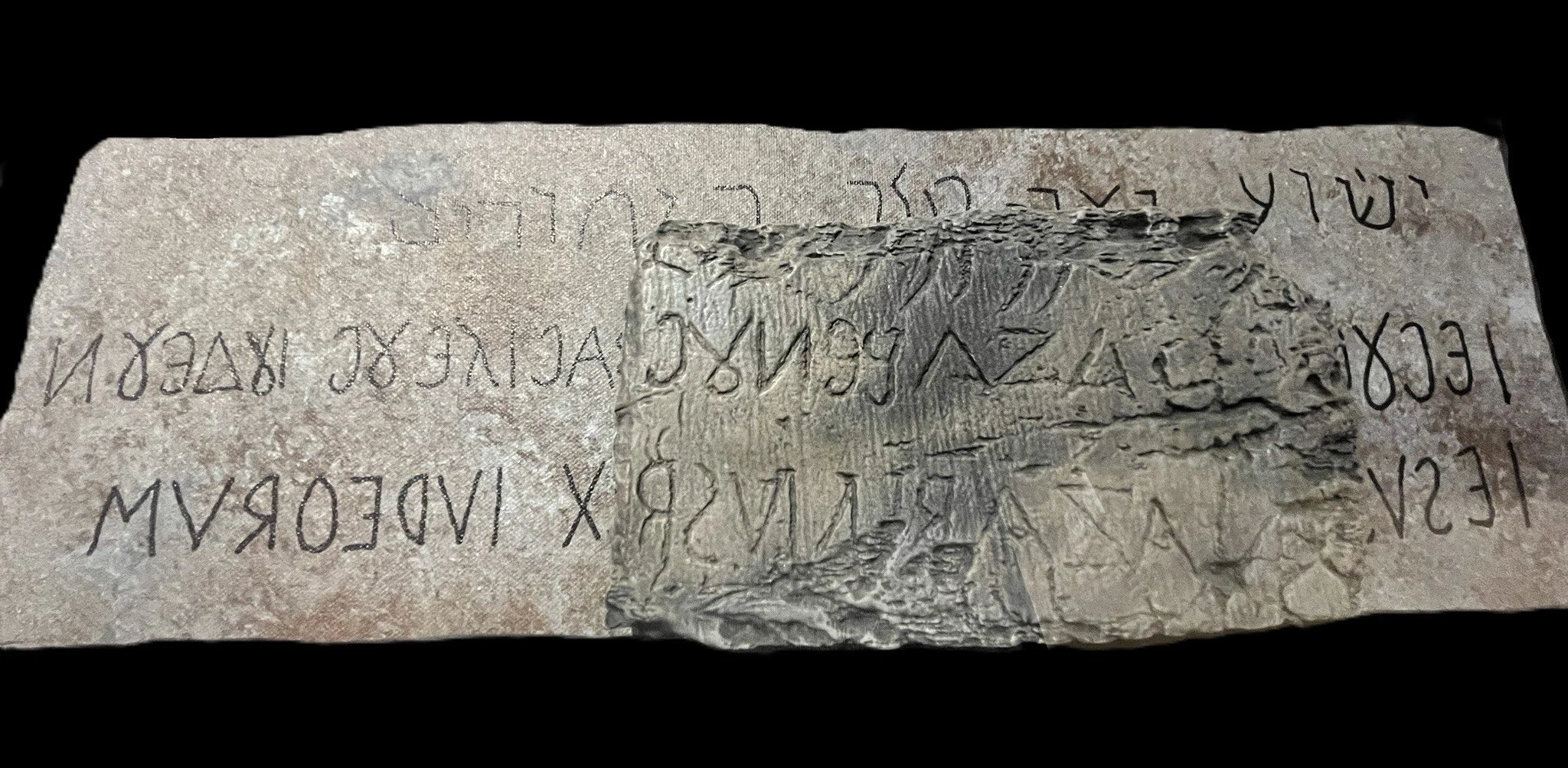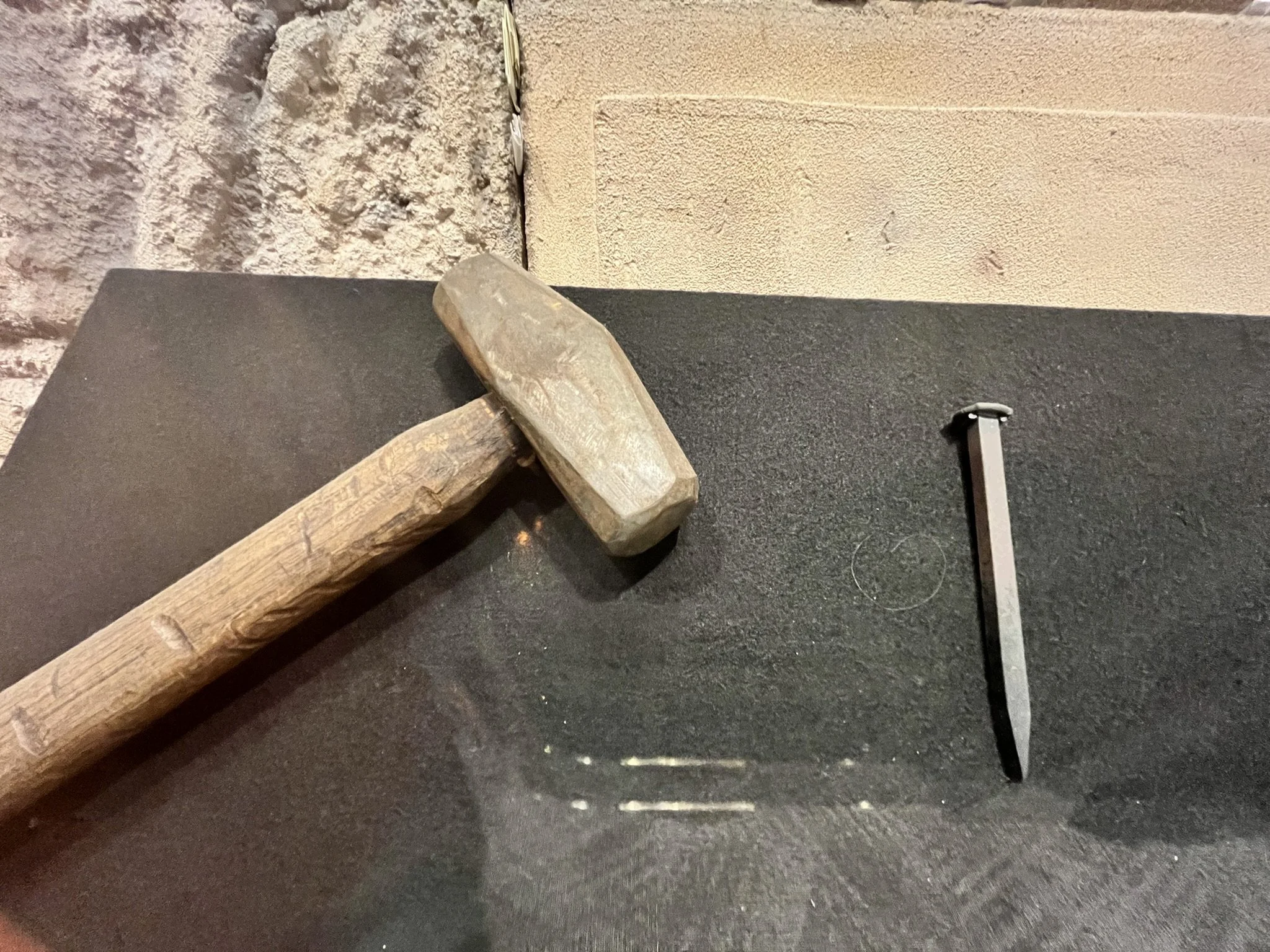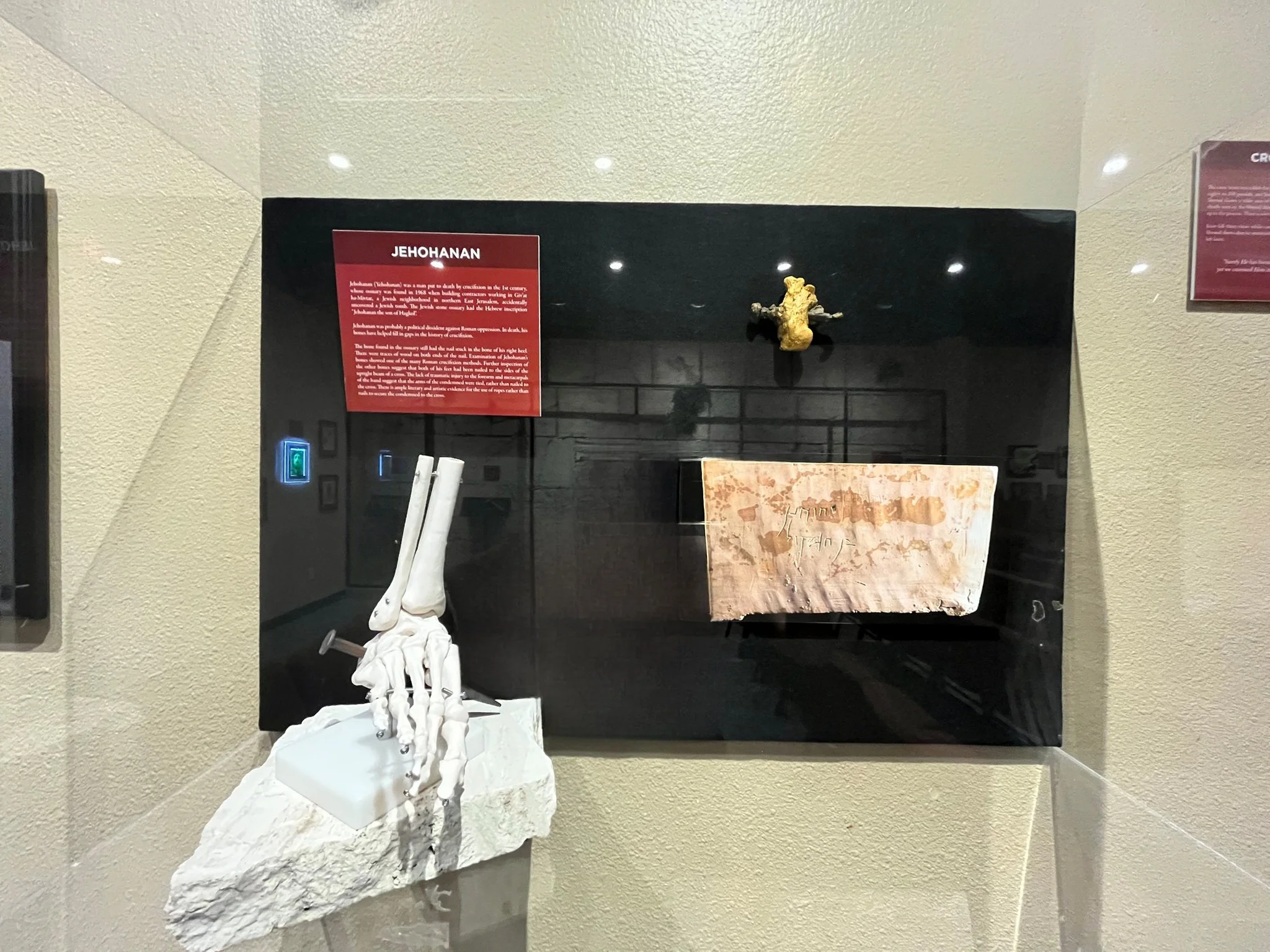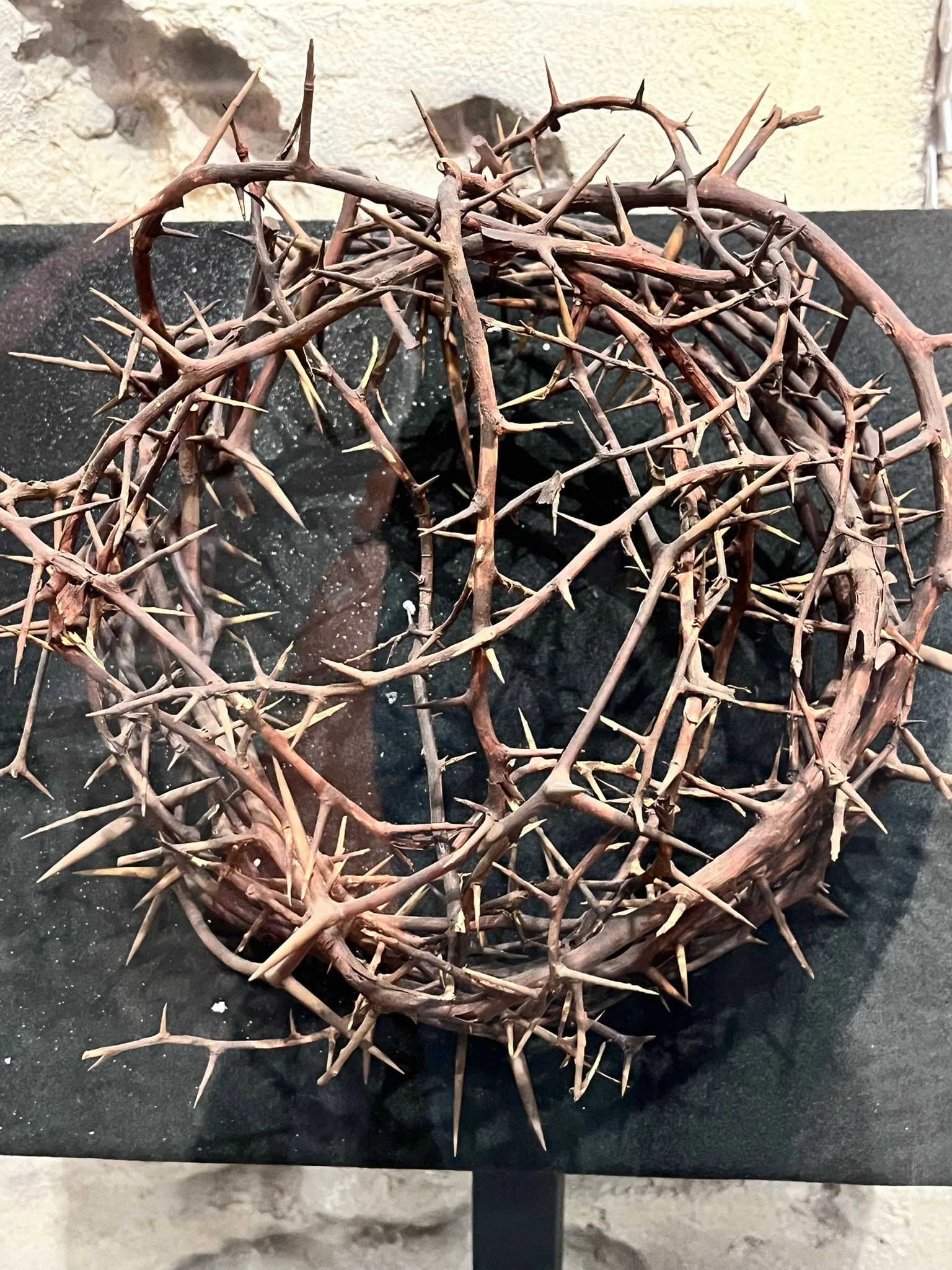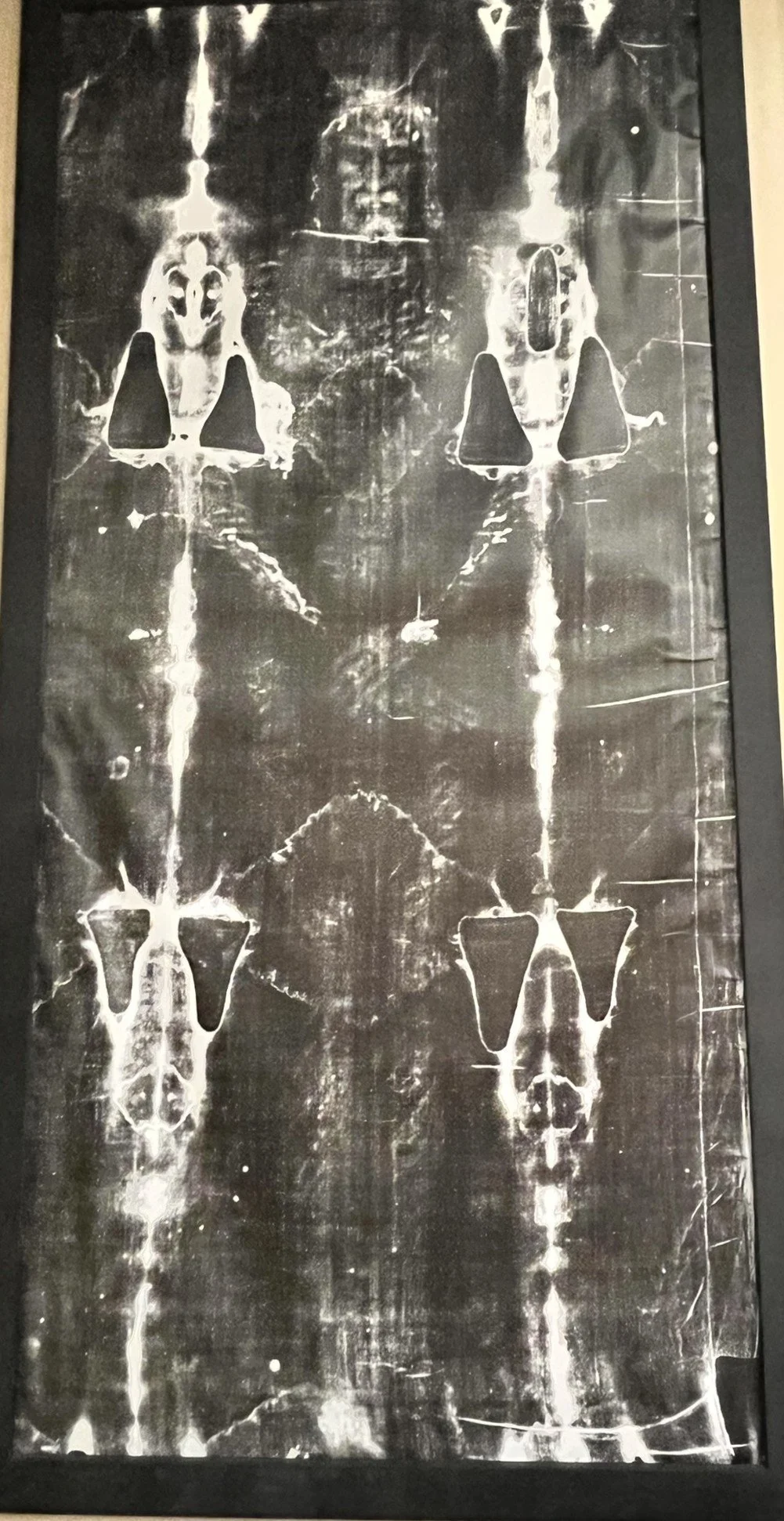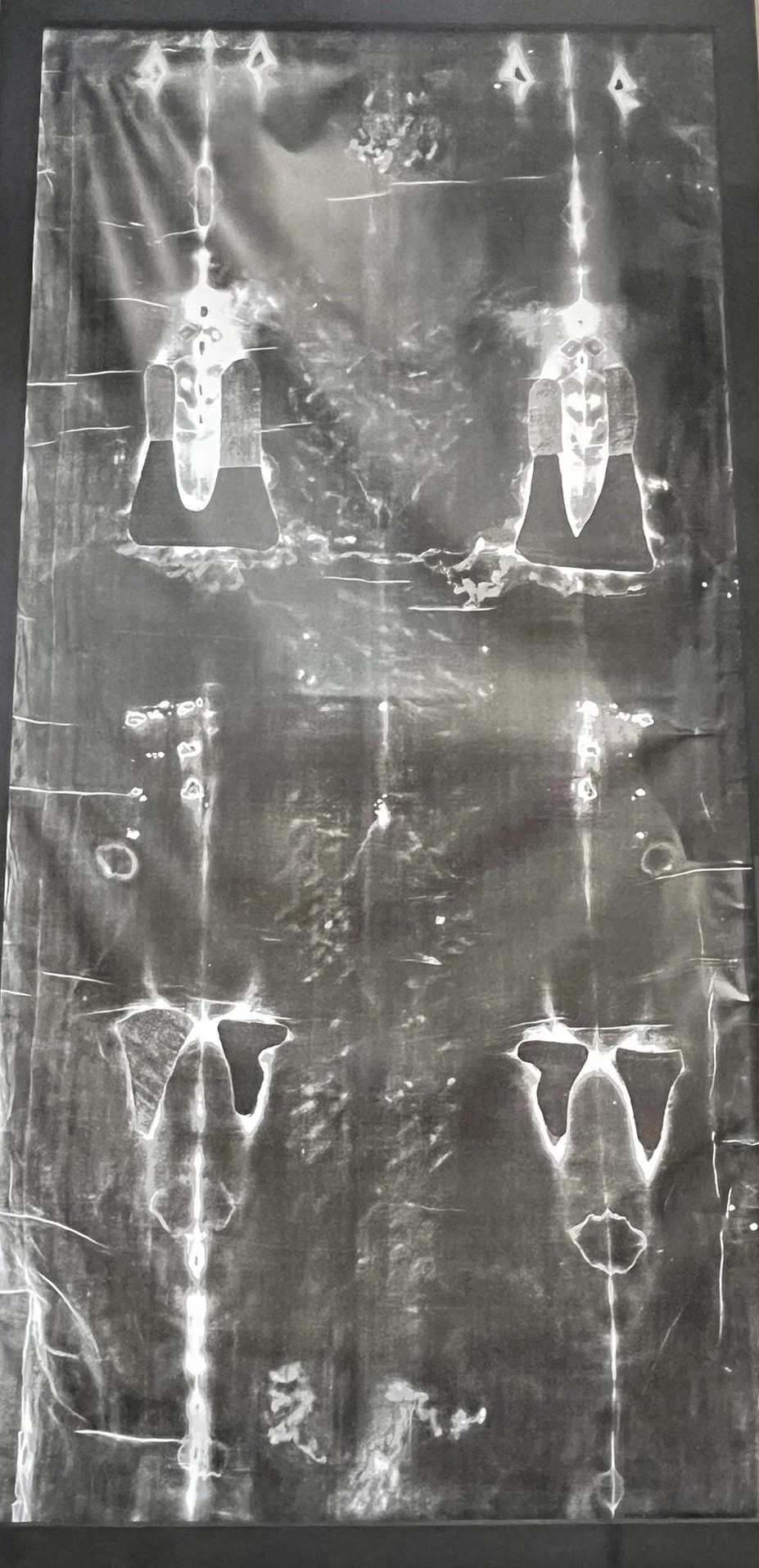Under Construction
This is a rare replica of the Caiaphas Ossuary.
In November 1990, in the south of Jerusalem, a construction crew accidentally smashed through the roof of a tomb during some work in the Peace Forest near the North Talpiot Neighborhood.
Their superintendent reported it to the Antiquities Authority after the tomb’s roof was opened by a bulldozer, to reveal the rock-hewn loculi (a recess in an ancient catacomb or tomb, where a body or cinerary urn was placed).
The four cave niches contained 12 ossuaries (stone boxes for retaining the bones of the deceased) of which six had been disturbed by grave robbers.
One very ornate ossuary contained the bones of two infants, to teenaged boys, an adult woman, and an adult man of about 60 years of age. Besides the detailed etching there were traces of bright orange paint. It was inscribed “Yehosef bar Qayafa” on the long side, and “Yehosef bar Qafa,” on the narrow side.
Experts believe that this is the ossuary of Joseph the son of Caiaphas. Joseph sone of Caiaphas was the Jewish High Priest from 18-36 CE and is known chiefly for his involvement in the arrest of Jesus as described in the New Testament.
“Then the detachment of troops and the captain and the officers of the Jews arrested Jesus and bound Him. And they led Him away to Annas first, for he was the father-in-law of Caiaphas who was the High Priest that year. Now it was Caiaphas who advised the Jews that it was expedient that one man should die for the people.”
John 18:12-14
Thirty Pieces of Silver
At the time of Jesus’ ministry, Israel used coins as a means of currency. Shekels were a very common coin of the era. Weighing in at .5 Troy ounces, the shekels were about the size of an United States quarter, but all were just a bit different in size and stamp placement due to how they were minted.
It is assumed that the coins used to pay Judas for his betrayal of Jesus was the Tyrian Shekel, since that was the coin used for the Temple taxes paid by the Jews at that time. “Then one of the twelve, called Judas Iscariot, went to the chief priests and said, “what are you willing to give me if I deliver Him to you?’ And they counted out to him thirty pieces of silver. So from that time he sought opportunity to betray Him.” Matthew 26:14-16
Later, after Jesus’ arrest Judas was remorseful and took the money back to the priests, but they refused to take it, calling it “blood money.” Judas then threw the money into the temple and went and hanged himself. The priests then took the silver and bought a field, now known as “The Field of Blood,” and buried him there.
“And they took the thirty pieces of silver, the value of Him who was priced, whom they of the children of Israel priced,” and gave them for the potters field, as the LORD directed me.” Matthew 27:9-10; Jeremiah 32:6-9
There is an example of a Tyrian Shekel in case four in the foyer.
This is a replica of the ankle bone of a crucified man named Jehohanan.
There have been nine crucified individuals found in grave sites to date. One of these individuals was named Jehohanan (Yehohanan), who was crucified in the 1st century. The ossuary was found in 1968 when building contractors working in the Giv’at Ha-Mivtar, a Jewish neighborhood in north eastern Jerusalem, accidently uncovered a Jewish tomb. the Jewish stone ossuary had the Hebrew inscription “Jehohanan the son of Hagkol.”
Jehohanan was probably a political dissident against Roman oppression. In death his bones have helped fill in gaps in the history of crucifixion;
The bone found in the ossuary still had the nail stuck in the bone of his right heel. There were traces of wood on both ends of the nail. Examination of Jehohanan’s bones showed one of the many Roman crucifixion methods. Further inspection of the other bones suggest that both of his feet had been nailed to the sides of the upright beam of the cross. The lack of traumatic injury to the forearm and metacarpals of the hand suggest that the arms were tied rather than nailed to the cross. There are ample literary and artistic evidences for the use of ropes rather than nails to secure the condemned to the cross.


